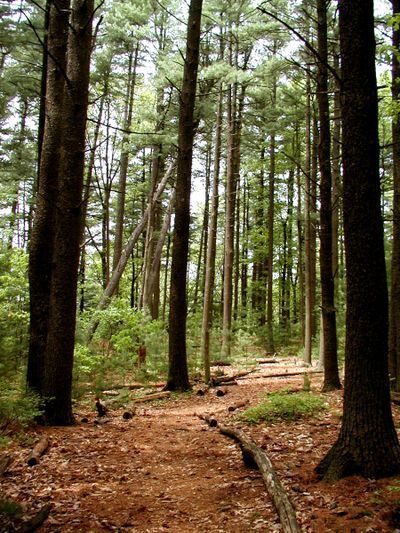Published December 19, 2022
Can Rhode Island Rise to The Challenge of Protecting Core Forests?
Editorial by Priscilla De La Cruz, Senior Director of Government Affairs
Recently I had the opportunity to visit Prudence Island, the third largest in Narragansett Bay. Nearly eighty-five percent of the island’s roughly 1,800 acres are protected from development, including 240 acres that were donated to Audubon. This commitment to conservation supports a diverse ecosystem and critical habitats including coastal wetlands, natural marshes, and forestlands that allow wildlife to thrive. Prudence had a long history of farming during colonial times and served as a Navy base during World War II. It is now home to roughly 200 year-round residents and the Narragansett Bay National Estuarine Research Reserve, where state and federal scientists monitor water quality and ecological conditions. While the residents of Prudence are committed to protecting the Island’s natural resources, the impacts of climate change could already be seen on the coastal lines of Sandy Point Lighthouse. Due to high tides, increases in sea level rise, and extreme storm surges, the impact was visible and alarming.
While we may not have all the answers at Audubon, we have strong partnerships and collaborate with a wide range of public and private stakeholders and policymakers. We think creatively about holistic solutions and opportunities. We have the determination to ask important questions and insist on truthful answers. Our questions help to bring focus to climate and issues—from solar development to the need for green affordable housing and clean transportation options. Perhaps the biggest opportunity we have at our fingertips is breaking through public and private silos to avoid making infrastructure development decisions within a vacuum approach, especially considering the influx of federal dollars that could be leveraged.
Rhode Island has the opportunity, through smart policymaking and investments in clean energy and jobs, to change our current status quo of state renewable energy programs. These programs must not continue to be at odds with our climate goals, unintentionally leading to the clear-cutting of large tracts of forests as developers focus on inexpensive and privately owned open space. With careful and comprehensive planning and adjustments to state policy, real progress can be made. With intentional investments and incentives to level the costs of building solar on previously disturbed land or “preferred sites”—such as gravel pits, landfills, commercially zoned properties, rooftops, and parking lots—forests can be protected and coexist with renewable energy and clean energy jobs.
Audubon’s advocacy and education efforts to elevate the value of forests is ongoing. We collaborate with groups such as the RI Woodland Partnership, play a role in the Land Use and Forest Conservation Commissions, and will ensure that our policy priorities for 2023 will reflect the need for reform of solar development siting. Audubon will continue to support effective land use decisions and conservation initiatives that align with our climate goals.
* Core forest is defined as blocks of undisturbed forested land of 250+ acres.
2019 Report: The Value of Rhode Island Forests



















